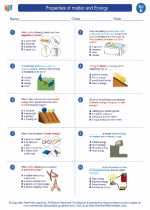Plains
A plain is a broad expanse of relatively flat land. It is usually low in elevation and lacks significant topographic variation. Plains can be found on every continent and cover a large portion of the Earth's surface. They are important geographical features that have a variety of ecological, agricultural, and geological significance.
Formation of Plains
Plains can be formed through a variety of geological processes, including erosion, deposition, and tectonic activity. Some of the common processes that contribute to the formation of plains include the gradual deposition of sediments by rivers, the smoothing of land by glacial activity, and the subsidence of land due to tectonic forces.
Types of Plains
There are several types of plains, each with its own unique characteristics:
- Coastal Plains: These plains are formed by the deposition of sediments along the coast by the action of waves and currents.
- Alluvial Plains: These plains are formed by the deposition of fertile soil by rivers and streams, making them ideal for agriculture.
- Interior Plains: These plains are located away from the coast and are often formed by the erosion and deposition of sediments by ancient rivers and glaciers.
- Plateau Plains: These plains are located on the tops of plateaus and are characterized by flat, elevated land.
Importance of Plains
Plains play a crucial role in supporting various ecosystems and human activities. They are often ideal for agriculture due to their fertile soils and relatively flat terrain. Additionally, many important cities and transportation networks are located on plains due to their ease of development and accessibility.
Study Guide
To better understand the topic of plains, it is important to study the following key points:
- Describe the formation processes of plains and provide examples of each.
- Explain the differences between coastal plains, alluvial plains, interior plains, and plateau plains.
- Discuss the ecological and agricultural significance of plains.
- Identify and locate major plains on a world map.
Understanding the formation, characteristics, and significance of plains will provide a comprehensive understanding of these important geographical features.
.◂Science Worksheets and Study Guides Fifth Grade. Properties of matter and Energy

 Worksheet/Answer key
Worksheet/Answer key
 Worksheet/Answer key
Worksheet/Answer key
 Worksheet/Answer key
Worksheet/Answer key
 Vocabulary/Answer key
Vocabulary/Answer key
 Vocabulary/Answer key
Vocabulary/Answer key
